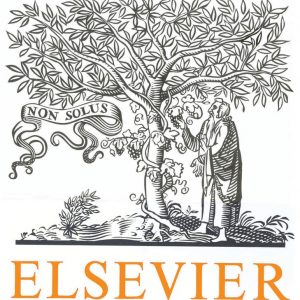دانلود رایگان مقاله لاتین اهداکنندگان سازمان رفاه خانوار از سایت الزویر
عنوان فارسی مقاله:
تقابل کنترل، رسانه های اجتماعی و روابط عمومی و سازمانی: مطالعه اهداکنندگان سازمان های رفاه خانوار
عنوان انگلیسی مقاله:
Control mutuality, social media, and organization-public relationships: A study of local animal welfare organizations’ donors
سال انتشار : 2016

برای دانلود رایگان مقاله اهداکنندگان سازمان رفاه خانوار اینجا کلیک نمایید.
بخشی از مقاله انگلیسی:
2. Literature review
2.1. Reputations Reputations are “perceptual representations of a company’s past actions and future prospects” (Fombrun, 1996; p. 72). Reputations provide organizations with competitive advantages (Fombrun, 1996), and as such, should be considered for their financial implications for donations. Reputations represent what an organization stands for, or its values, and establish performance standards for customers, donors, shareholders, vendors, and other relevant publics (Fombrun, 1996). Consistency in communication and action afford members of key publics the ability to accurately assess the organization to determine if the organization has met or exceeded expectations (Fombrun, 1996). An organization’s ability to engage in dialogue with its key publics and listen to their concerns and feedback is particularly important to managing perceptions about an organization (Fombrun & Rindova, 2000). The ability to listen and exceed publics’ expectations is a fundamental component of reputation management(Fombrun & Rindova, 2000). Through listening and adjusting business practices accordingly, organizations can maintain a good reputation (Fombrun & Rindova, 2000). 2.2. Organization-public relationships Thirteen years after Ferguson’s (1984) call for further study of organization-public relationships, Broom, Casey, and Ritchey (1997) examined relationships as a concept, highlighting the need for a universal definition for relationships. Broom et al. (1997) contended that organization-public relationships had antecedents and outcomes. Furthermore, Broom et al. (1997) asserted that organization-public relationships consisted of perceptions and expectations, as well as linkages based on needs of bothparties.Broomet al.(1997)noted thatthe process offorming andmaintaining organization-public relationships required measurement, which further highlighted the need for a universal definition. Organization-public relationships have different dimensions. Ledingham and Bruning (1998) defined organization-public relationships as “the state which exists between an organization and its key publics in which the actions of either entity impact the economic, social, political and/or cultural well-being of the other entity” (Ledingham & Bruning, 1998, p. 62). Ledingham and Bruning (1998) contended that there were five dimensions of organization-public relationships: trust, openness, involvement, investment, and commitment. Acknowledging previous works of J. Grunig, some scholars contended that effective relationships are mutually beneficial for all parties − organizations and their respective publics (Bruning, DeMiglio, & Embry, 2006; Ledingham & Bruning, 1998). Ledingham and Bruning (1998) contended that relationships flourished when there was balance, commitment, openness, and trust in the relationship. Some scholars focusing on online organization-public relationships argue that the Internet allows organizations to have a more balanced relationship with key publics by fostering understanding (Hallahan, 2006). Hallahan (2006) argued organizations need to be committed to and knowledgeable about the use of online media. Furthermore, Hallahan (2006) argued that there were organizational, system-based, and user-specific antecedents, which included commitment, accessibility, and pre-existing relationships with the organization, to creating organization-public relationships online. Hallahan (2006) noted that the process of creating organization-public relationships online included building awareness and adoption, facilitating cognitive learning, creating opportunities for interaction, as well as impression formation. Consequences of creating online-public relationships include fostering knowledge of the organization, positive attitudes toward the organization, communication activity, as well as repetitive behaviors such as purchases (Hallahan, 2006). Measurement of organization-public relationships online, especially perceived relational strategies such as conversational human voice and communicated relational commitment, may help heighten perceptions of relational outcomes (Kelleher & Miller, 2006; Kelleher, 2009). Kelleher and Miller (2006) argued that “communicating with a sense of humor, admitting mistakes, treating others as human, and providing links to competitors” formed conversational human voice (p. 399). Kelleher and Miller (2006) found that perceptions of relational strategies on websites and blogs were highly correlated with perceptions of relational outcomes such as trust, satisfaction, control mutuality, and commitment. Findings from Kelleher and Miller (2006) lend to further study of organization-public relationships in different online contexts such as social media.
برای دانلود رایگان مقاله اهداکنندگان سازمان رفاه خانوار اینجا کلیک نمایید.
کلمات کلیدی:
[PDF]How Local Nonprofit Organizations can use Narratives to Build ... digitalcommons.lsu.edu/cgi/viewcontent.cgi?article=1509&context=gradschool... by RP DeLaune - 2015 - Related articles NARRATIVES TO BUILD ORGANIZATION-PUBLIC RELATIONSHIPS ..... campaigns, successful adaptation of social media among nonprofits remains slower than for .... between organization and publics (control mutuality), the degree to which ... [PDF]Hospice organizations on the social media scene - LSU Digital ... digitalcommons.lsu.edu/cgi/viewcontent.cgi?article=4555&context=gradschool... by E Tiller - 2011 - Related articles Using the Internet and social media offer hospice organizations a ... marketing and public relations efforts for hospice organizations. While the consumers .... “Relationship Quality Outcome Indicators” as control mutuality, satisfaction, trust and. Organization–public relationships - Wikipedia https://en.wikipedia.org/wiki/Organization–public_relationships Organization–public relationships is a key concept in public relations. The emergence of .... Control mutuality--The degree to which parties agree on who has the rightful power ... Maintaining face or doing a face-work in front of others is important in social interactions, especially for expanding or enhancing human networks. [PDF]Authentic Relationship Management to Heighten Control Mutuality in ... scholarcommons.sc.edu/cgi/viewcontent.cgi?article=4627&context=etd by DC Sisson - 2015 - Related articles highlighting the role of control mutuality in analyses of authenticity in organization-public relationships in social media for nonprofit organizations like local ... Developing Mutual Relationships With Supporters - Faunalytics https://faunalytics.org/reference-item/developing-mutual-relationships-supporters/ Feb 10, 2017 - Creating and fostering online relationships with the public are key ways of ... Control Mutuality, Social Media, And Organization-public ...
